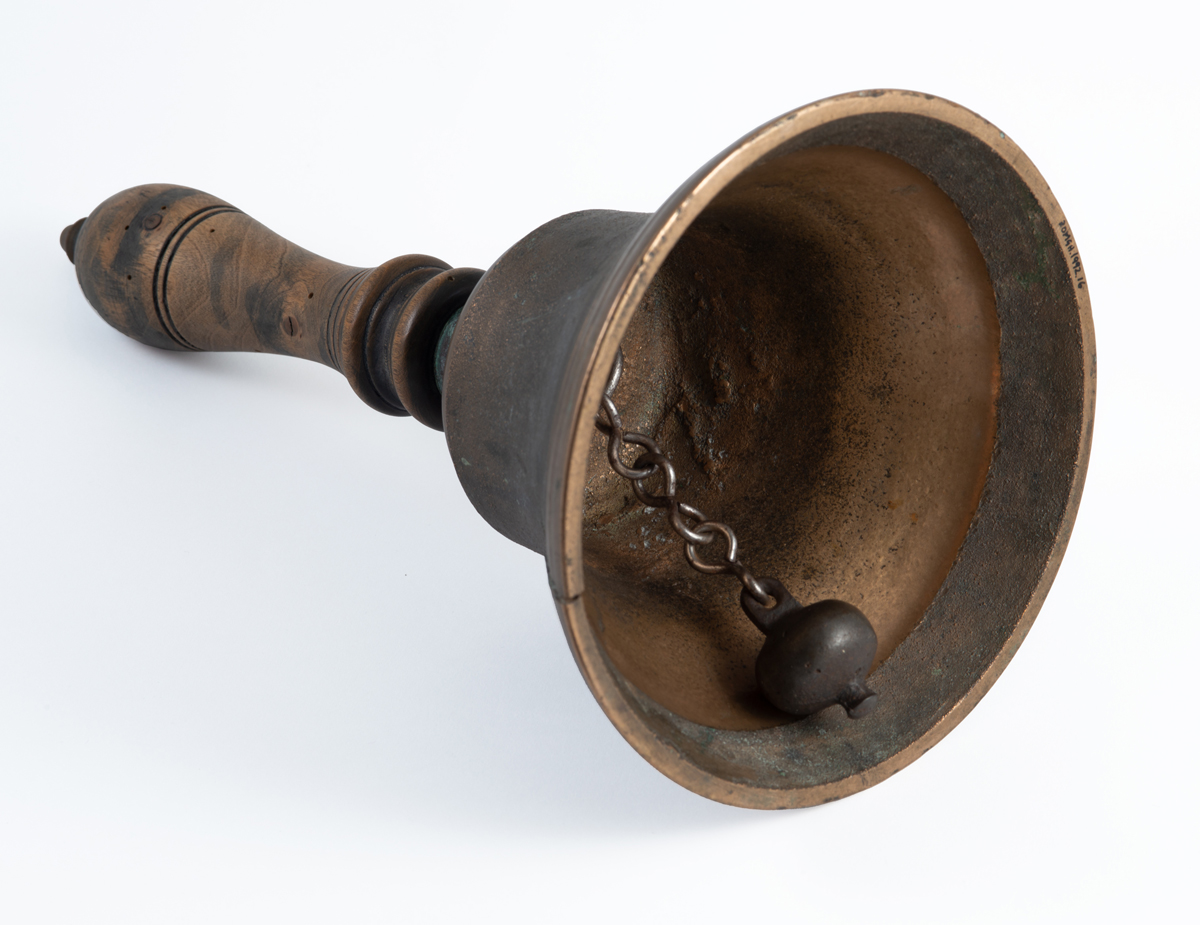POOR HOUSE
FORTROSE
The Black Isle Combination Poorhouse, or Ness House, located on Ness Road, was designed by William Lawrie. Its doors opened in 1861. The large building combined poor house, hospital and asylum.
Historian Elizabeth Sutherland describes the Poor House as accommodating:
‘ …vagrants, jobless and the destitute and was run like a prison by a governor and matron under the administration of an Inspector of the Poor. A family called Gillanders, father, son and grandson held this post successively from 1845 until the law was changed.’
Image: The Poor House © Crown Copyright: HES (List C Survey)

Above: Hand bell from the Black Isle Combination Poor House; 1860s
Left: Poor House door key; 1860s
The Poor House was similar to others at Inverness, Bonar Bridge and Nairn. They followed a model for Scottish poor houses that aimed to make them look less prison-like. This was to give them an air of domesticity. Nevertheless, they remained heavily regulated institutions.
An H-block layout enabled easy separation into male and female wings. Work areas were assigned to women (a laundry) and men (a bakery). Children were removed from their parents and separated again by sex.

Poor Registers
Groam House Museum doesn’t have the register of those who were sent to the Poor House. We do have registers that record the poor of the parish and the support that they received to help keep them out of the Poor House. The Register of Poor Persons on the roll of the Parish of Rosemarkie from the period 1845-1864 was set out in 17 columns, documenting an individual in the following terms*

This list refers to the columns in the register as seen above (click on image ot enlarge)
1. Name of pauper
2. Present Residence
3. Married or single, widow or widower. If child, orphan, deserted, or bastard
4. Name of each dependant living with Pauper
5. Age/ Years
6. Place of Birth
7. Trade or occupation
8. If wholly or partially disabled
9. Description of disablement
10. Means and Resources of Pauper besides Parochial Relief
11. Names and weekly earnings of Parents
12. Names, ages, and earnings of children not living with Pauper, and whether married, and number of children
13. Date when admitted on Roll No
14. Amount of relief in money
15. Amount of relief in food, clothing, fuel, lodging, or of any other kind
16. Date and removal from Roll
17. Remarks
*Please note the terminology in this historic document is of its time and includes terms today that are outmoded and offensive.
Listen
Listen to Chris Rendell talking about life in the Black Isle Combination Poor House.
Read
Read more about life in the Black Isle Combination Poor House in Lenathehyena’s Blog





